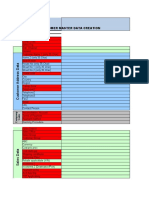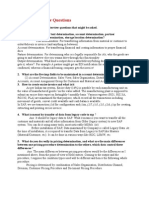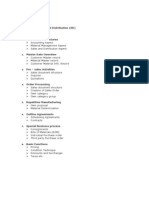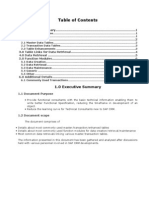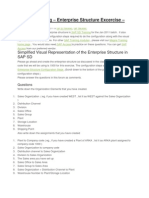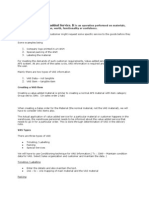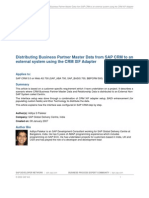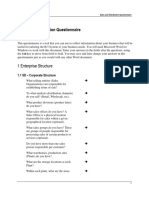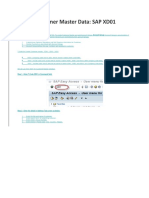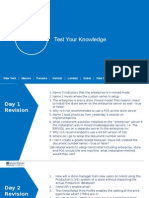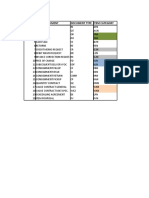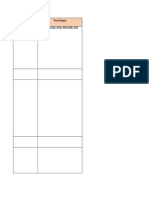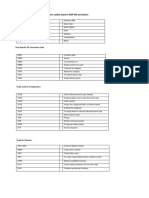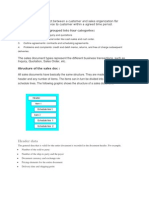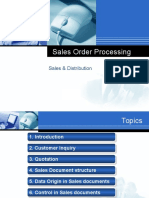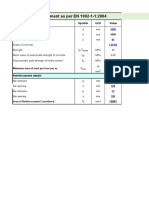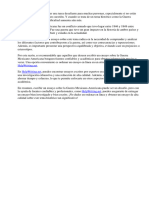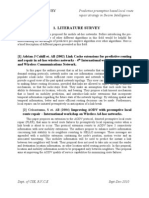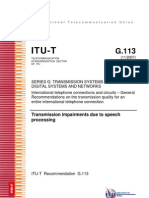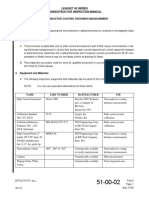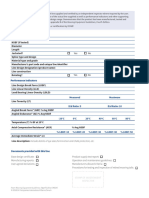Structure of the sales documents
We use different sales document types to map different sales processes
like Inquiry, quotation, sales order etc.
Document Type - Sales document
All these sales documents share same structure [however some
exceptions]
They are made up of a document header and any number of items. The
items can in turn be divided into any number of schedule lines. The
following graphic shows the structure of a sales document:
Header data
The general data that is valid for the entire document is recorded in the
document header. For example,
Number of the sold-to party
Number of the ship-to party and the payer
Document currency and exchange rate
Pricing elements for the entire document
Delivery date
�Item data
Whereas data in the document header applies to all items in the
document, some data applies only to specific items. This data is stored
at item level and includes the:
Material number
Quantity
Number of the ship-to party and the payer (an alternative ship-to
party or payer can be defined for a particular item)
Plant and storage location specifications
Pricing elements for the individual items
Schedule line data
An item consists of one or more schedule lines. The schedule line
contains all the data that is needed for a delivery. For example, a
customer orders 20 units of a particular material which you enter as one
item in the sales order. However, you can only deliver 10 pieces now
and the remaining 10 pieces next month so you need to schedule two
deliveries. The data for these deliveries (dates, confirmed quantities) are
stored in two separate schedule lines. In sales documents where
delivery data is not relevant, for example, contracts, credit and debit
memo requests, the system does not create any schedule lines.
Data recorded in the schedule lines includes the:
Schedule line quantity
Delivery date
Confirmed quantity
�Origin of Data in Sales Documents
When you create a sales document, the system proposes much of the
data from the following sources:
Data from Master Records
Data Determined by the System
Data from Preceding Documents
Data from Master Records
When you create a sales document without referring to a preceding
document, the system copies the following data from the master records:
Data about the sold-to party and other partners (for example, ship-
to party or payer) from the customer master records
Item data from the material master record
Data from any relevant customer-material information records
The following graphic shows some of the data that is either transferred
to the sales document or determined in the sales document.
�Data from the Customer Master Record
Among other things, the name of the sold-to party as well as agreements
for complete deliveries and order combinations are copied from the
customer master record into the document. You can change this data for
each transaction.
The document contains data that can be entered in the header and in
the items. The header data here normally applies to the items as well.
For example, payment terms, Incoterms, partner functions, and the
delivering plant are copied from the customer master records of the
business partner into the document and the items. You can change the
data in each item.
Data from the Material Master Record
The system copies data from the material master record and copies it
into the individual items. Data from material master includes the
description, Division, Weights, sales Units, Default plant, different
material groups applicable
Data From system determinations
Such data are determined either due to Configuration [IMG settings or
due to Programs] some examples
a) Pricing procedure [IMG configuration]
b) Plant @Item level [Program]
c) Shipping point @item level [ IMG Config]
d) Conditions at the item level [IMG configuration]
e) Batch determination [IMG configuration]
Data from Preceding Documents
If you create a sales document with reference to a proceeding
document, the system copies nearly all the data from the preceding
document.
The data in the preceding document originally comes from the customer
and material master records. Because the data is copied from the
preceding documents into the sales document, any changes that have
been made to the master data records since the preceding document
was created are not included in the sales document.
�Customer and material master data
Quotation
Sales Order
All the data at Header and Item copied from
Quotation



